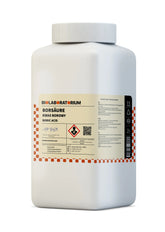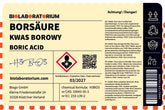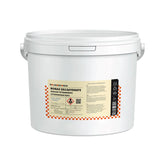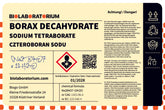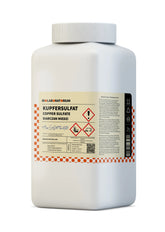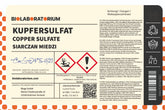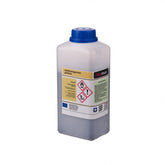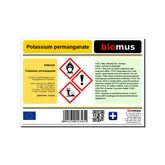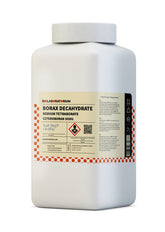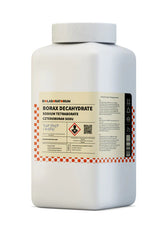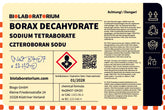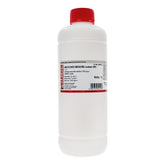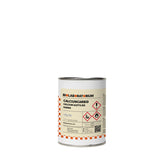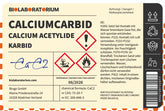Soluble starch in chemistry and technology – A practical guide
Soluble starch is a versatile and useful polysaccharide used in a variety of applications in chemistry and technology. In this blog post, we will take a closer look at the properties, production, and use of soluble starch and provide an overview of its numerous applications.
What is soluble starch?
Soluble starch, also known as modified starch or chemically treated starch, is a derivative of natural starch obtained from potatoes, corn, wheat, or other starch sources. Through chemical or physical modifications, the structure of the starch is altered to improve its solubility, viscosity, and other properties.
Unlike natural starch, which is insoluble in water, soluble starch can be dissolved in water, organic solvents, or other liquids. This significantly expands its range of applications.
Production of soluble starch
The production of soluble starch is carried out through various methods that can be adapted depending on the intended use. Some common methods are:
Acid hydrolysis
In this process, starch is treated with diluted acids such as hydrochloric acid or sulfuric acid to break the bonds between glucose units and shorten the molecular chains. This leads to increased solubility.
Enzymatic hydrolysis
Using enzymes such as α-amylase or glucoamylase, starch can also be broken down into smaller, soluble units.
Oxidation
Oxidative methods, where starch is treated with oxidizing agents such as sodium hypochlorite or hydrogen peroxide, lead to a breakdown of molecular chains and improved solubility.
Crosslinking
By crosslinking starch molecules using bifunctional reagents such as epichlorohydrin or phosphorus oxychloride, the solubility, viscosity, and stability of starch can be specifically influenced.
Thermal treatment
Heating starch in the presence of water or alcohol can also achieve a breakdown of molecular chains and an increase in solubility.
Depending on the application area, these methods can be used individually or in combination to achieve the desired properties of soluble starch.
Properties of soluble starch
Soluble starch is characterized by a range of properties that justify its diverse applications:
Solubility
As already mentioned, soluble starch, unlike natural starch, is well soluble in water, organic solvents, and other liquids. This enables its use in aqueous systems and formulations.
Viscosity
Soluble starch can increase the viscosity of liquids and thus be used as a thickener or stabilizer. The viscosity can be specifically adjusted by varying the molecular structure.
Film formation
Soluble starch can form stable, transparent films upon drying, making it interesting for coating and encapsulation applications.
Emulsifying and binding ability
Soluble starch can act as an emulsifier and binder by stabilizing oil-water emulsions or binding solid particles in suspensions.
Biodegradability
As a natural polysaccharide, soluble starch is biodegradable, making it an environmentally friendly raw material.
Low toxicity
Soluble starch is largely harmless to humans and the environment, enabling its use in food and cosmetic-related applications.
Applications of soluble starch
The diverse properties of soluble starch make it an extremely versatile material in numerous industries:
Food industry
Soluble starch is used as a thickener, stabilizer, emulsifier, or binder in foods such as sauces, puddings, baked goods, or canned foods.
Cosmetics and pharmaceuticals
In cosmetic products and pharmaceuticals, soluble starch can be used as a binder, carrier, or viscosity regulator.
Paper and textile industry
Here, soluble starch serves as a coating agent, filler, or finish to improve surface properties.
Construction chemistry
In building materials such as fillers, adhesives, or plasters, soluble starch is used as a binder and flow regulator.
Oil and gas industry
In oil and gas extraction technology, soluble starch is used as drilling fluid, flocculation, or thickening component.
Plastics industry
Soluble starch can be used as a filler, binder, or plasticizer in plastic products.
Further Applications
Furthermore, soluble starch is used in adhesives, paints, printing inks, lubricants, fertilizers, and many other products.
Safety in handling soluble starch
Although soluble starch is considered relatively harmless, some safety aspects must be observed when handling it:
- Avoid dust formation: When handling powders, explosive dust can form, which must be kept away from ignition sources.
- Avoid contact with eyes and skin: Soluble starch can cause irritation and should therefore be handled with protective equipment.
- Observe fire hazard: Soluble starch is flammable and can catch fire upon contact with open flames or sparks.
- Observe disposal regulations: Soluble starch is biodegradable but should be disposed of according to applicable regulations.
By adhering to basic safety measures, handling soluble starch can be done without problems.
Conclusion
Soluble starch is a versatile and useful polysaccharide used in numerous applications in chemistry and technology. Through targeted modifications, its properties such as solubility, viscosity, or film formation can be specifically influenced to adapt it to the respective requirements.
From the food and cosmetics industry to oil and gas extraction technology – soluble starch is used in many industries and offers numerous advantages thanks to its environmental friendliness and low toxicity. With proper handling and safety measures, the potential of this natural substance can be fully utilized.

